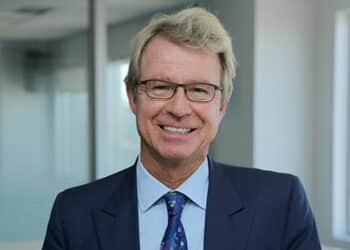The Fed cut rates for the first time this year in September, lowering its target range for the federal funds rate by 25 basis points to 4 per cent to 4.25 per cent.
With the market now pricing in two more cuts this year, as well as an additional two in 2026, Federated Hermes has backed the rate-cutting period as an opportune moment to invest in short-duration bonds, which are typically between one and three years.
Speaking to InvestorDaily, head of fixed income at Federated Hermes, Ihab Salib, said the asset class allows investors to secure historically high yields and potential capital appreciation, while also reducing the risks associated with an unpredictable global economic climate.
Salib broke this theory down into three key reasons:
Firstly, as opposed to money market funds (MMFs), holding onto those yields for longer is preferable in the current environment.
“If the Fed cuts tomorrow, money market rates go down immediately. If you hold a two-year duration bond fund, you get a price appreciation, and you hold on to these yields for longer,” Salib said.
Secondly, investors venturing further along the curve may face increased credit and spread duration risk due to the general uncertainty surrounding credit risk.
“If I’m holding a 10-year bond and spreads move 1 per cent or 100 basis points, I’m down 10 per cent. If I hold the two-year bond and spreads, say, 2 per cent, I’m still getting paid really well in the front end of the curve, and you get to avoid that volatility that comes with longer dated bonds,” he explained.
Finally, Salib said that Federated Hermes takes a global approach to short-duration investments, using a hedged, multi-currency strategy, which prevents their portfolio from being overly influenced by the monetary policy and economic cycles of the United States.
Currently, Salib said the firm’s strategy involves investments in over two dozen countries globally across at least three currencies. These investments span European and emerging markets, and include both corporate and sovereign entities.
“There are opportunities everywhere that you have to find where there is a mispricing or the misevaluation of issuers with the same or better credit metrics,” he said.
He elaborated, stating that acquiring a single A-rated bank from a bank in an emerging market economy, which might be traded as a triple B minus in a developed country, could possess superior, or at minimum, equivalent credit metrics.
Commenting on last month’s Treasury survey by JP Morgan, which found that, as of 8 September, the percentage of long duration clients had increased to 30 per cent from 28 per cent in the previous week, Salib maintained that the firm favours steepening positions with inflation projected to come down.
“What longer duration bonds price from inflation expectation, is very different from the front end of the curve.
“We like being long duration, per se, but more concentrated on the front end up to the five-year part of the curve rather than further out because of those inflation expectations,” he said.
Future possibilities
Looking ahead, Salib outlined three possible scenarios for inflation and its effects on fixed income – two of which favour short-duration bonds.
“If inflation continues to come down at the same pace, then you’re likely to have central banks ease off or continue cutting since they want to support the economy. That’s good for short-duration assets,” Salib said.
On the other hand, should inflation prove persistent at elevated rates, he said central banks would likely maintain their current stance, suggesting investors could benefit from prolonged higher yields in the one to three year range.
For his part, he said the “only scenario” that could be detrimental from a short-duration perspective would be if inflation begins to accelerate again, which is not what markets are currently pricing in.
However, he clarified that this would entail a “paying trade” for all assets, not exclusively short-duration debt.
“The effect on a short-dated bond is still going to be a lot better than a five or 10 or 15-year bond,” Salib added.
Overall, he concluded that given yields are currently high, rate hikes could potentially be absorbed if they were to occur.
“There’s enough of a cushion now with yields on higher versus when rates were 0, for example, where you quickly go into the negative territory,” he concluded.






